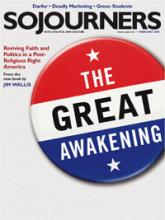The gospel calls us to a “preferential option for the poor” to address the conditions of the 37 million adults and children who live in poverty in the United States. But what about the “near poor”?
In The Missing Class , Katherine Newman and Victor Tan Chen focus our attention on the 57 million Americans who occupy the precarious economic rung just above poverty. They are the “near poor” or “missing class”—households that fall between the stable middle class and the impoverished. Their household incomes range from $20,000 to $40,000.
Our “missing class” neighbors don’t qualify for, in the words of Newman and Chen, the “dwindling government-provided benefits for the truly poor,” such as public day care, Medicaid, and welfare. But they also lack the means to afford their own quality child care and services. They may have higher incomes, but the stability of homeownership and significant savings eludes them. Those with health insurance are “weakly insured” and have inferior health options. While they may not receive direct subsidies, their security is woven closely to the quality of government spending and institutions—human services, neighborhood schools, libraries, policing, and economic development.
Many members of the missing class have escaped poverty, but their economic circumstances remain precarious. They are prime targets of predatory lenders and credit card pushers. They live in impoverished neighborhoods and are surrounded by relatives and loved ones who depend on them. As the authors write, “Poverty has a way of creeping back into the lives of members of the missing class in the form of relatives who can no longer manage and must lean on more fortunate kin.”
Read the Full Article
